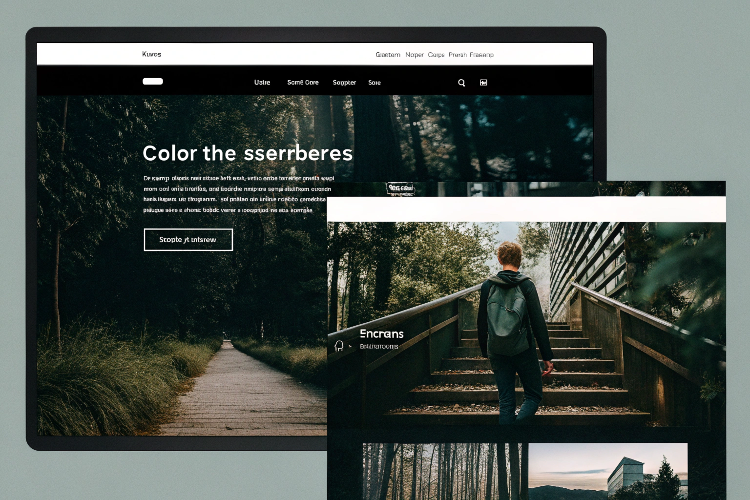Blog
How to Build a High-Performance Website from Scratch
Web Development & Design ▪ 2025-03-07

In today’s fast-paced digital world, a high-performance website is essential for businesses and individuals looking to establish a strong online presence. A well-optimized website ensures fast loading speeds, smooth navigation, and an enhanced user experience, which ultimately improves search engine rankings and boosts conversions. Whether you’re a developer, entrepreneur, or business owner, building a high-performance website from scratch requires careful planning, the right technologies, and optimization techniques.
In this guide, we’ll explore the step-by-step process of creating a high-performance website that loads quickly, ranks well on search engines, and provides an exceptional user experience.
Step 1: Define Your Website Goals and Audience
Before diving into development, it’s crucial to identify the purpose of your website and understand your target audience. Ask yourself:
-
What is the main objective of the website? (e.g., e-commerce, blog, portfolio, business site)
-
Who is the target audience? (age, demographics, interests, browsing behavior)
-
What key functionalities do you need? (e.g., contact forms, payment gateway, media galleries)
Understanding these factors will help you make informed decisions about the website’s design, structure, and features.
Step 2: Choose the Right Tech Stack
Selecting the right technology stack is critical for website performance. The tech stack includes the programming languages, frameworks, and tools used to build your site. Here are some popular options:
Front-End Technologies
-
HTML5 & CSS3 – Structure and styling
-
JavaScript (JS) Frameworks – React.js, Vue.js, or Angular for dynamic interactions
-
Bootstrap or Tailwind CSS – Responsive design frameworks
Back-End Technologies
-
Node.js, Python (Django/Flask), PHP (Laravel), or Ruby on Rails – Server-side scripting
-
Databases – MySQL, PostgreSQL, MongoDB (NoSQL option)
Hosting & Deployment
-
Cloud Hosting – AWS, Google Cloud, DigitalOcean
-
Content Delivery Network (CDN) – Cloudflare, Akamai, or Fastly for faster content delivery
Step 3: Plan a Responsive and User-Friendly Design
A responsive design ensures that your website works well on all devices, including desktops, tablets, and smartphones. Key considerations include:
-
Mobile-First Approach: Design for mobile users first, then scale up for larger screens.
-
Simple Navigation: Use intuitive menus and clear CTAs (Call-to-Action buttons).
-
Minimalist UI: Avoid cluttered designs; focus on readability and usability.
-
Accessibility: Ensure your site meets WCAG (Web Content Accessibility Guidelines) for all users.
Step 4: Optimize Website Performance
Website speed is a crucial factor for user experience and SEO. Here’s how to optimize performance:
1. Optimize Images and Media
-
Compress images using tools like TinyPNG or ImageOptim.
-
Use next-gen formats like WebP instead of JPEG/PNG.
-
Implement lazy loading to load images only when needed.
2. Minimize HTTP Requests
-
Reduce the number of external scripts and stylesheets.
-
Use CSS sprites for multiple small images.
3. Enable Caching
-
Implement browser caching for static assets.
-
Use server-side caching solutions like Redis or Varnish.
4. Implement a Content Delivery Network (CDN)
-
A CDN distributes your site’s content across multiple global servers, reducing load times for users worldwide.
Step 5: Secure Your Website
Cybersecurity is essential to protect user data and ensure trustworthiness. Key security measures include:
-
Use HTTPS (SSL/TLS Certificates): Encrypts data transfers to prevent cyber threats.
-
Implement Secure Authentication: Use strong passwords, two-factor authentication (2FA), and session timeouts.
-
Protect Against DDoS Attacks: Use firewalls and security services like Cloudflare.
-
Regular Security Audits: Perform vulnerability scans and security patches.
Step 6: Search Engine Optimization (SEO) Best Practices
SEO helps improve your website’s visibility on search engines. Implement the following strategies:
On-Page SEO
-
Keyword Optimization: Use high-ranking keywords naturally in content, titles, and meta descriptions.
-
SEO-Friendly URLs: Keep URLs short and descriptive (e.g.,
example.com/high-performance-website). -
Meta Tags: Include unique meta titles and descriptions for each page.
-
Internal Linking: Link to relevant content within your website to improve navigation.
Technical SEO
-
Structured Data Markup: Implement schema.org to enhance search result appearance.
-
XML Sitemap: Submit your sitemap to Google Search Console.
-
Robots.txt: Manage which pages search engines should crawl.
-
Fast Load Speeds: Google prioritizes fast-loading websites in rankings.
Step 7: Test and Debug Your Website
Thorough testing ensures that your website functions correctly across different browsers and devices. Testing tools include:
-
Google PageSpeed Insights: Analyze and optimize load speeds.
-
Lighthouse (Chrome DevTools): Perform performance and SEO audits.
-
BrowserStack or LambdaTest: Test cross-browser compatibility.
-
W3C Validator: Ensure HTML and CSS code quality.
Step 8: Launch and Monitor Performance
Once your website is optimized and tested, it's time to launch! Key steps include:
-
Final SEO Checklist: Double-check meta tags, keywords, and structured data.
-
Submit to Search Engines: Use Google Search Console to index your site.
-
Performance Monitoring: Use tools like Google Analytics, Hotjar, and New Relic to track user behavior.
-
Regular Updates: Continuously update content, plugins, and security features.

